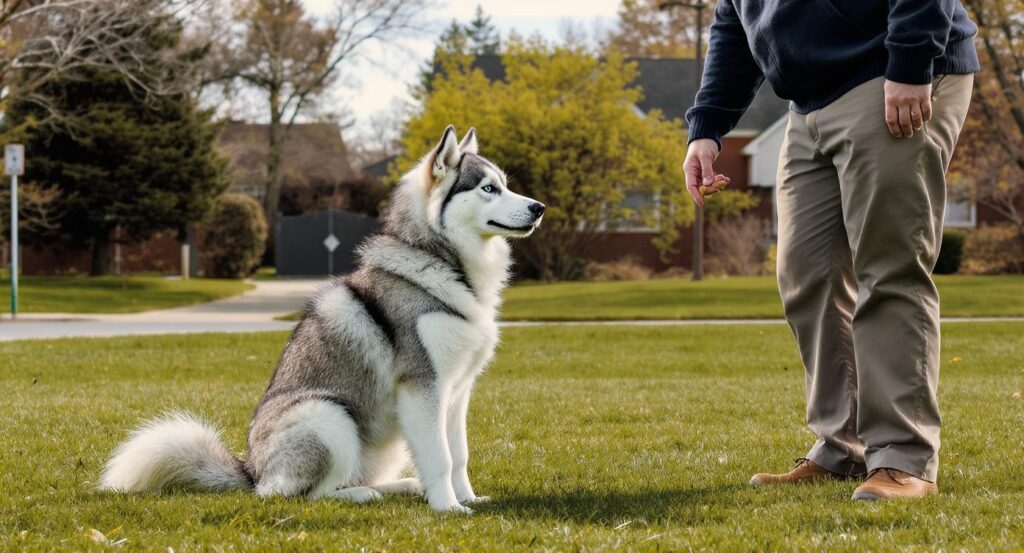Training a Husky to come when called? Honestly, it can feel like one of the toughest parts of having this breed. Their strong prey drive and independent streak often make them want to run the other way.
Learning the right recall training methods gives you more control and keeps your Husky safe in everyday situations.
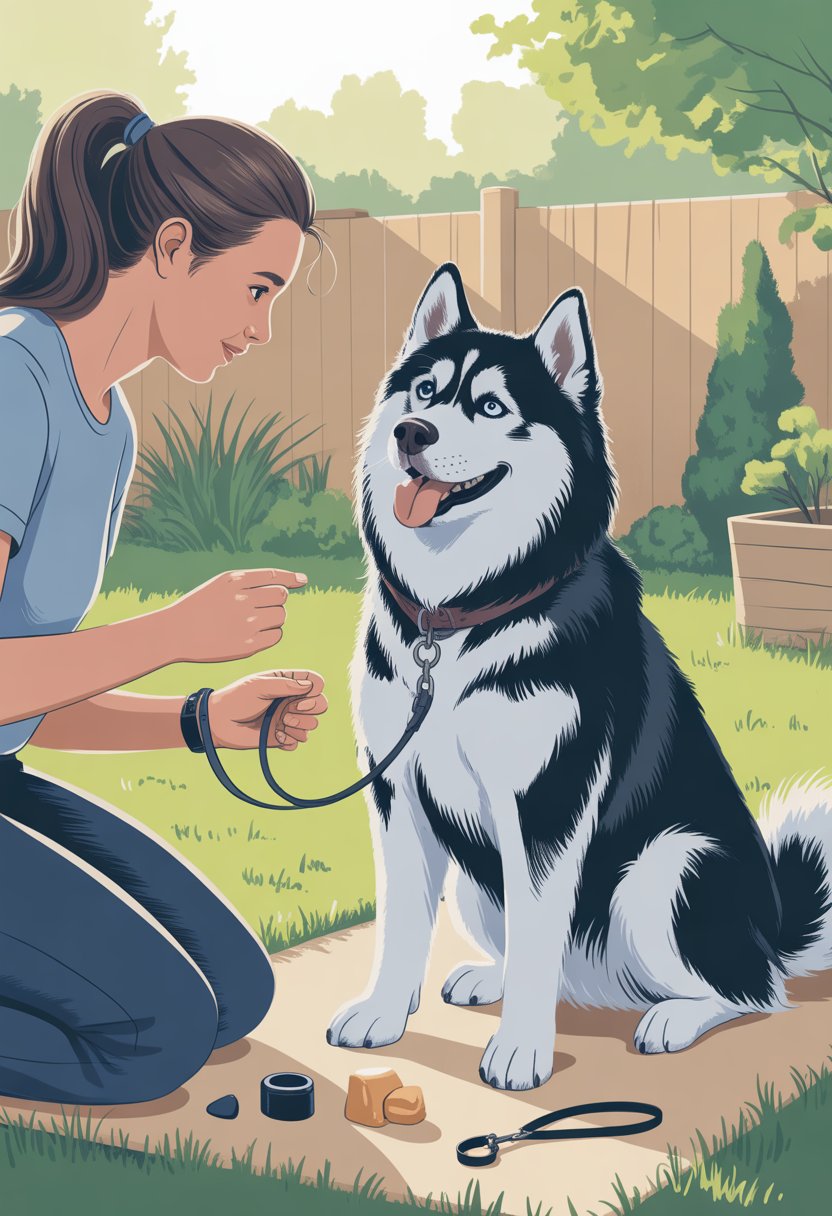
You’ll find out how to start recall training early, set up the right environment, and use rewards that actually motivate your dog. It’s all about practical steps you can use right away, plus a bit of insight into the unique challenges Huskies bring.
Start recall training early with your Husky puppy
Begin recall training while your Husky is still a puppy, usually around 10 to 12 weeks old. At this stage, your pup is much more open to learning and forming good habits.
Starting young helps you set clear expectations before bad habits sneak in. Keep training sessions short and fun so your puppy doesn’t lose interest.
Use treats, toys, or praise to reward them every time they come to you. That positive reinforcement really helps your pup connect coming when called with something good.
Practice in quiet spaces first, like your home or yard. Once your puppy responds well, slowly add distractions.
Changing up the environment teaches your Husky that “come” means the same thing everywhere. Stay patient and consistent—recall won’t be perfect right away, but steady practice builds a solid foundation.
Use a consistent recall command that everyone in the family uses
Your Husky learns faster if you stick to one recall word. Pick a simple cue like “come” or “here” and use it every time.
If you keep changing the word, your dog might get confused and just ignore you. Make sure everyone in your home uses the same command.
If one person says “come” and another says “here,” your Husky won’t know which one to follow. Consistency really helps your dog connect the word with the action.
Tone matters, too. Use a friendly, upbeat voice instead of sounding stern.
Practice as a family so your dog hears the same word and tone from each person. That keeps things clear and avoids mixed signals.
Train in low-distraction environments first
When you start recall training, keep things simple. Pick a quiet space like your living room, backyard, or another calm area where your Husky won’t get distracted.
If you begin in a busy park or around other dogs, your Husky will probably ignore your call. Starting in a calm place sets your dog up for success.
Use high-value treats or a favorite toy every time your Husky comes to you. This helps your dog connect the recall cue with something positive.
Keep sessions short so your Husky stays engaged. Once your dog responds well in quiet spaces, slowly add more distractions.
Move to a slightly busier area, but only when your Husky is ready. Taking it step by step makes training smoother and less stressful.
Incorporate high-value rewards like favorite treats or toys
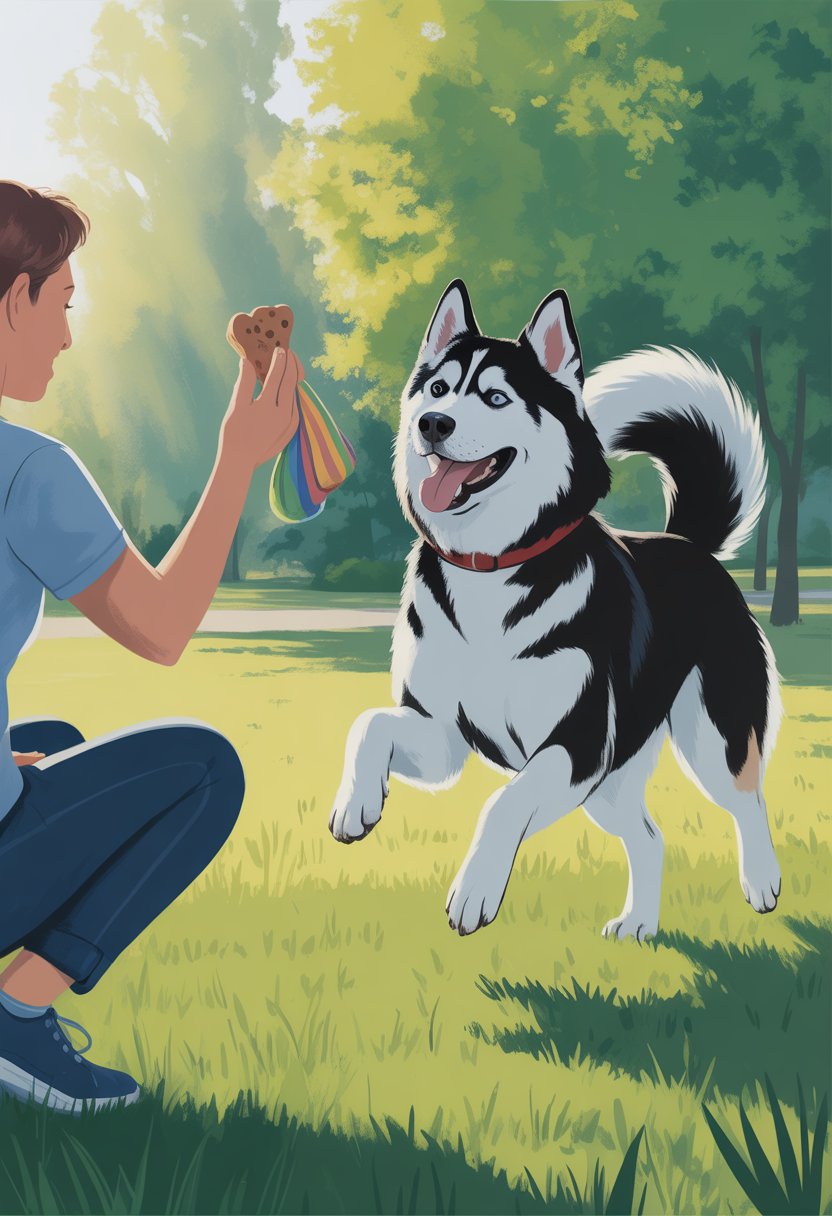
When you train your Husky to come when called, you need something that really grabs their attention. Regular kibble or dry biscuits usually don’t cut it.
High-value rewards, like small pieces of cooked chicken or cheese, work much better. If your Husky is more toy-driven, use a favorite ball, tug rope, or squeaky toy.
Figure out what your dog finds most exciting and save it just for recall practice. Use these rewards only during training sessions so they stay special.
If your Husky knows the best stuff only comes out when they come to you, they’ll be way more motivated. Keep treats or toys small and easy to deliver.
Reward your dog right away to make the connection to coming when called. That instant reward really matters.
Use a long lead to practice recall safely outdoors
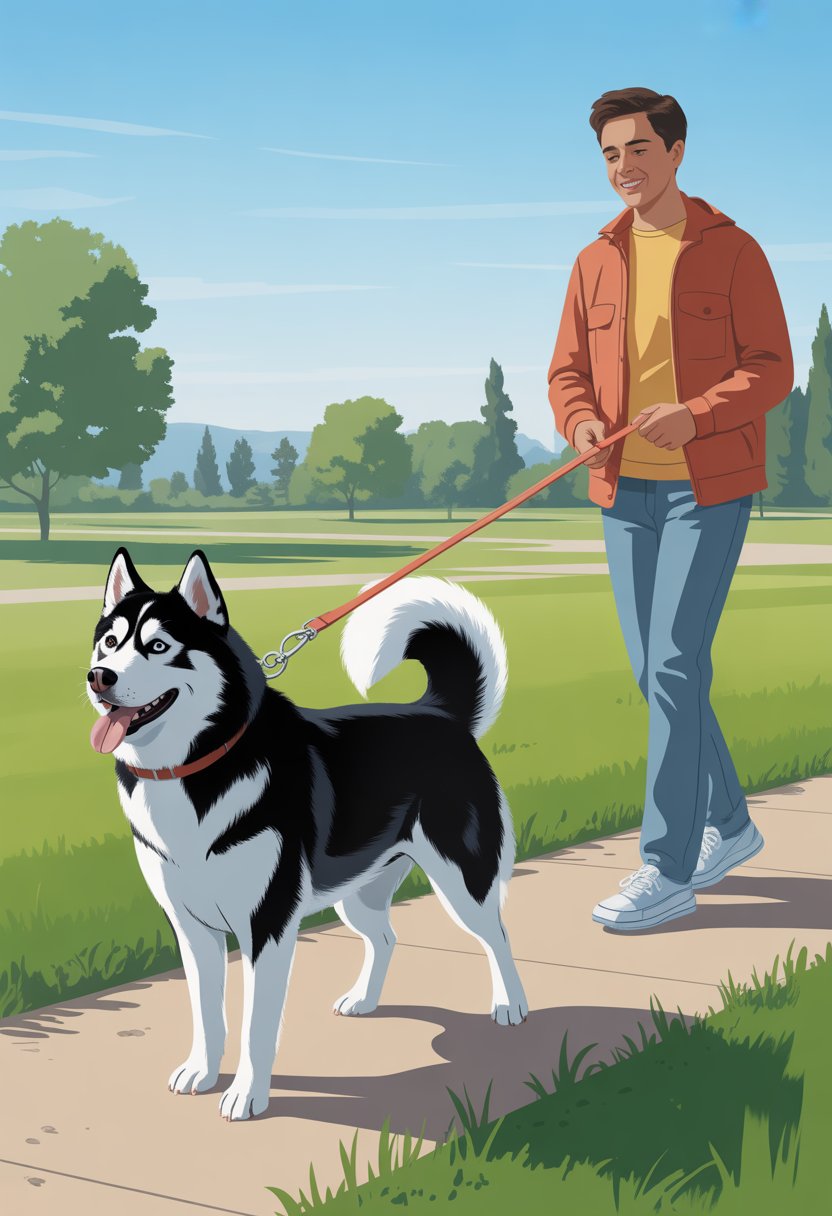
A long lead gives your Husky more freedom but keeps them under control. Usually, it’s 10 to 30 feet—perfect for recall training in open spaces.
Clip the long lead to your dog’s harness, not their collar. That way, if they pull or run, you won’t hurt their neck.
Let them explore while you hold the line loosely. When you call your Husky back, gently reel in the lead if they hesitate.
Reward them right away when they return. The extra space lets them practice coming from a distance without the risk of running off.
Use the long lead in safe areas like fields, parks, or quiet trails. Avoid tangled brush or crowded spots where the line could snag.
Keep sessions short and fun. Mix in play, praise, or treats so your Husky sees recall as a positive game.
Make recall training fun and engaging every session
You’ll get better results if your Husky actually enjoys recall practice. Keep each session light and playful so your dog looks forward to coming back.
Use treats, toys, or praise as rewards. Switch them up so your Husky doesn’t get bored with the same thing.
Add short games like chase-and-return or hide-and-seek. These make “come” feel like part of play, not a chore.
Keep sessions short, usually just a few minutes. Ending on a positive note helps your dog stay motivated for the next round.
If your Husky starts to lose focus, change locations or add a new distraction. Small changes keep training fresh and engaging.
Avoid repeating the recall command more than once

When you call your Husky, say the recall word only one time. If you repeat it, your dog may learn the first call doesn’t matter.
Your Husky is smart and picks up on patterns. If they hear you say “come” three times, they’ll think that’s the rule.
If your Husky doesn’t respond the first time, don’t just keep repeating yourself. Try using a happier tone, moving a few steps away, or showing a treat or toy.
These little changes make you more interesting and encourage them to come. Consistency is key.
Each time you call, make sure your Husky learns that coming to you is rewarding. With practice, they’ll respond faster because they know one call means it’s time to return.
Touch your Husky’s collar before rewarding recall
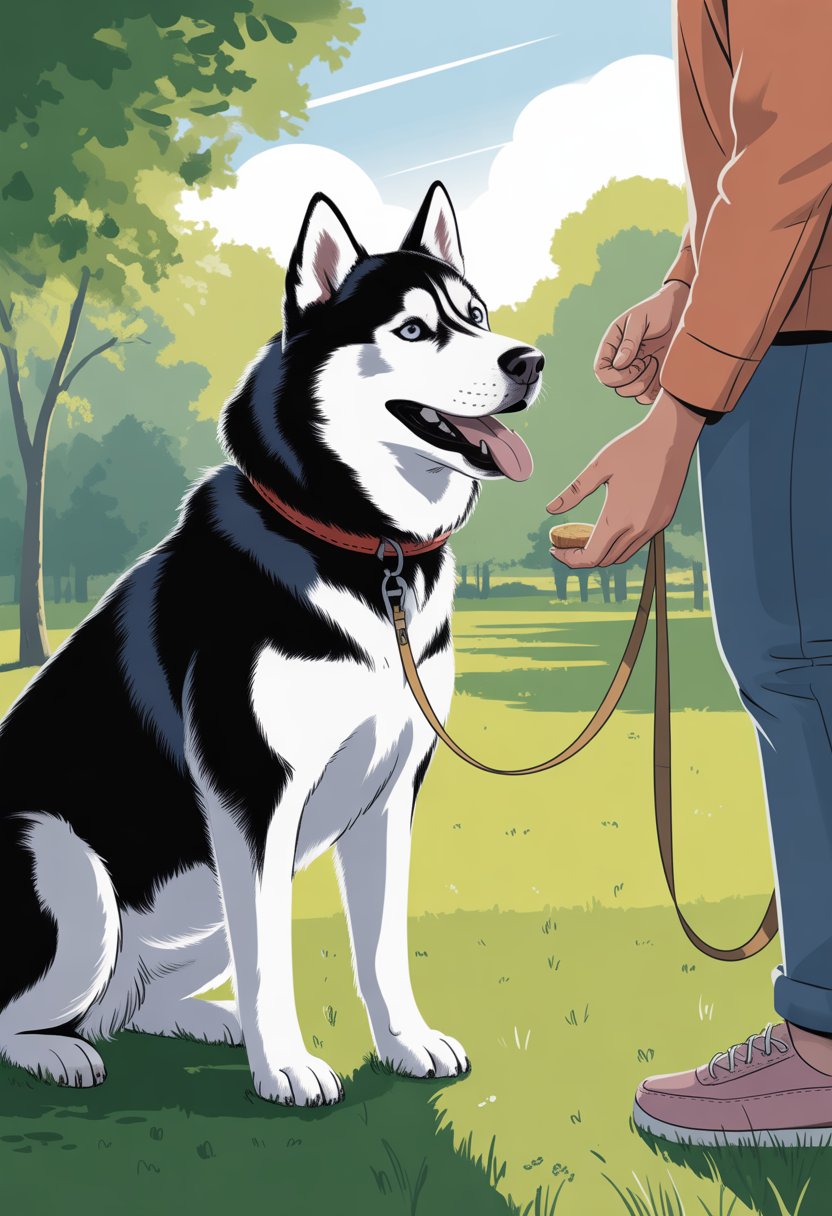
When your Husky comes back, make it a habit to touch their collar before giving a treat or praise. This step helps your dog get used to being handled after recall.
If you skip this, your Husky might learn to dart away as soon as they grab the reward. By touching the collar first, you show them that recall doesn’t always mean the fun ends.
This habit also prepares you for emergencies. If you need to clip on a leash quickly or stop your Husky from running off, they’ll already be comfortable with you reaching for their collar.
Keep it calm and rewarding. Touch the collar gently, then give a treat or toy right after.
Practice often in safe spaces, like your yard or on a long lead. The more you repeat it, the more natural it’ll feel.
Celebrate every successful recall to build positive association
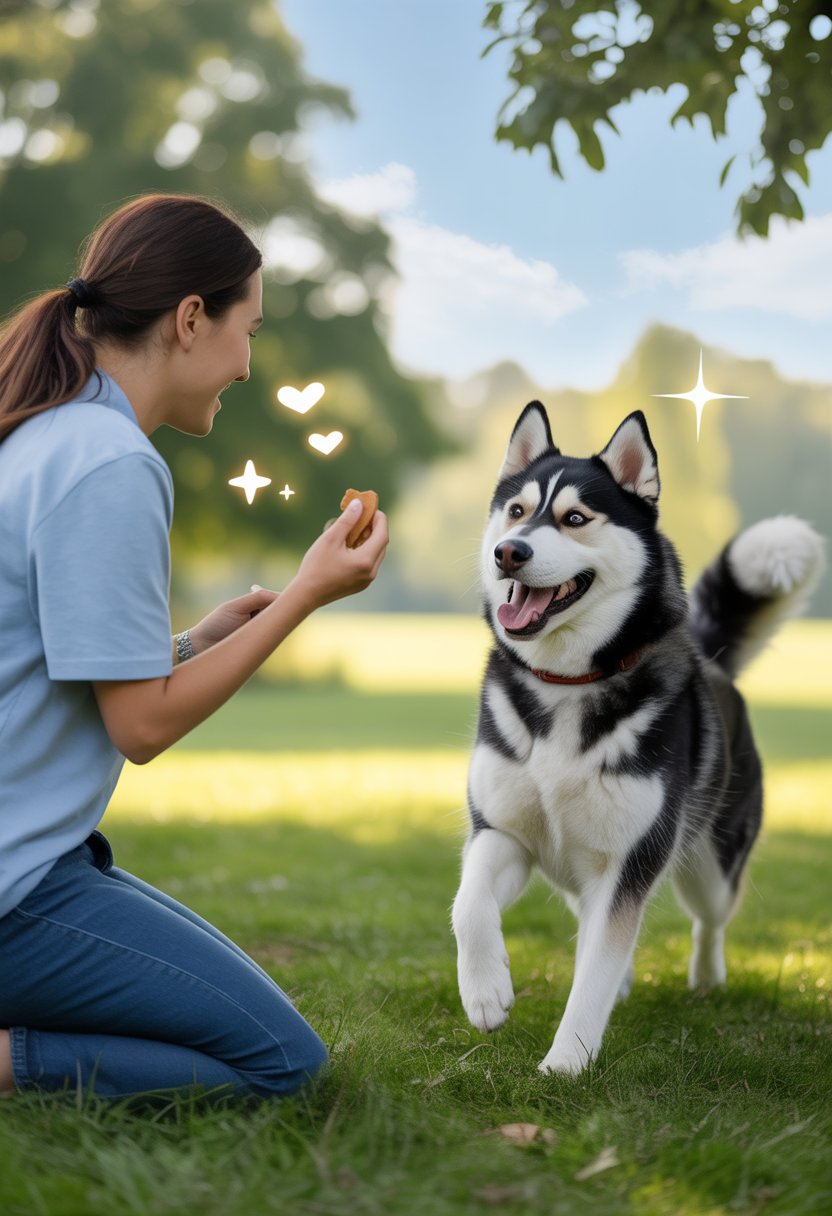
When your Husky comes back to you—even if it takes a little time—make it a big deal. Use a happy voice, give a treat, or play with a favorite toy.
You don’t need long celebrations. Just a few seconds of praise or a quick reward works.
Keep rewards varied so your dog stays interested. Sometimes give a treat, other times play tug or let them run again.
Even small wins count. If your Husky turns toward you or starts running back, reward that effort.
By celebrating each success, you build trust and make recall a habit your Husky actually enjoys. The more positive experiences you create, the more reliable your dog will be in different situations.
Be patient and expect weeks or months for reliable recall
You can’t rush recall training, especially with a Husky. Their independent nature means they won’t master it overnight.
Expect the process to take weeks, maybe even months. Some dogs catch on faster, but Huskies usually need more repetition and consistency.
If you stay patient and keep sessions short, you’ll notice progress. Don’t get discouraged if your Husky ignores you at first—that’s totally normal.
Reliable recall takes time to build, and every dog learns at their own pace. Keep practicing in different settings as your dog improves.
Start indoors, then move to the yard, and eventually try more distracting places. Each new environment builds stronger recall skills.
Understanding Husky Recall Challenges
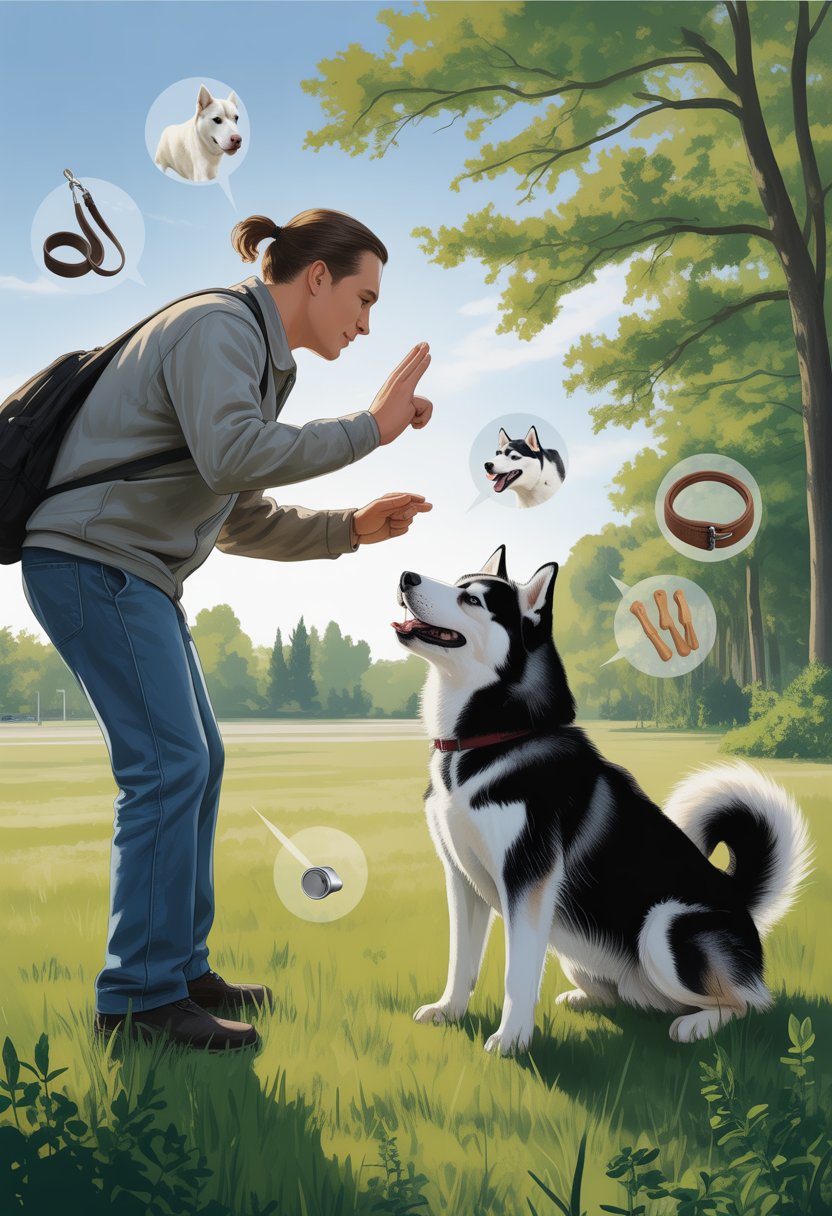
Huskies are smart and independent, which makes recall training tougher than with a lot of other breeds. Their strong prey drive, love of running, and ability to tune out commands when distracted can really trip up owners.
Why Huskies Struggle With Recall
Huskies were bred to pull sleds over long distances, so running far and fast just feels right to them. This instinct makes them less motivated to return when called—especially if something more interesting is happening.
Their prey drive is another big challenge. Small animals, moving objects, or even a new scent can grab their attention in a snap.
Once they’re focused, they often tune out your voice. Huskies also have what a lot of owners call “selective hearing.”
They might obey indoors but ignore you outside. It’s not so much stubbornness as it is distraction overload.
Environments full of sights, sounds, and smells make it harder for them to focus on you. Because of these traits, you can’t just teach recall once and be done.
You’ll need steady practice, high-value rewards, and training in all sorts of settings.
Common Mistakes Owners Make
One mistake is calling your Husky only when playtime is over. If “come” always means the fun ends, your dog will dodge it.
Mixing recall with rewards, games, and praise keeps things positive. Another common slip-up is chasing your Husky when they don’t come.
That often turns into a game where running away is way more fun than returning. Instead, try encouraging them with treats, toys, or even running in the opposite direction.
Many owners stick to the same quiet space and never move beyond it. Without practicing in busier areas, your Husky won’t learn to respond around distractions.
Gradually increasing difficulty helps build reliability. Inconsistent commands or tone can also confuse your dog.
Using the same word and keeping your voice upbeat makes it clear and inviting for them to come back.
Building a Positive Training Environment
Your Husky learns best when the setting feels rewarding and relaxed. The way you use rewards and how consistent you are can make all the difference.
Choosing the Right Rewards
Huskies respond best to what excites them, so you’ll need to figure out what motivates your dog most. For a lot of them, that’s food—but not just any food.
Use high-value treats like tiny bits of chicken, cheese, or freeze-dried meat. Keep treats small so you can reward often without overfeeding.
If your Husky isn’t food-driven, try toys or quick play sessions. A speedy game of tug or fetch can work wonders as a reward.
You should also switch things up now and then. If you always use the same treat, your Husky might get bored.
Rotate between food, toys, and praise to keep training interesting. Here’s a quick breakdown:
| Reward Type | Example | When to Use |
|---|---|---|
| Food | Chicken, cheese, kibble | Early training, high distractions |
| Toys | Tug rope, ball | For playful Huskies |
| Praise | Verbal “good job” + petting | To reinforce calm behavior |
Matching the right reward to the right moment makes recall training a lot more fun—and honestly, more effective.
Consistency and Patience in Training
Huskies are smart, but they’re also pretty independent. They’ll test boundaries just to see what they can get away with.
Stick to the same command word every time. If you say “come,” don’t start switching it up with “here” or “over.”
One clear cue helps your Husky link the word to the action you want. It’s tempting to mix things up, but honestly, it just confuses them.
Keep training sessions short—think 5 to 10 minutes. Do them daily if you can.
Long sessions usually just bore your Husky or make them frustrated. Frequent, quick practice works way better for building habits.
You’ll need patience for this. Reliable recall isn’t something you get overnight.
Some Huskies catch on in a few weeks. Others? It might take months.
Try to stay calm if progress slows down. It’s normal to hit a plateau.
Don’t repeat the recall command over and over. Say it once, then use movement, praise, or a treat to get your Husky’s attention.
If you keep repeating the word, they’ll learn they don’t have to respond right away. That’s not what you want.
Training a Husky takes time, and honestly, it can be a little frustrating. But that’s all part of the process.

